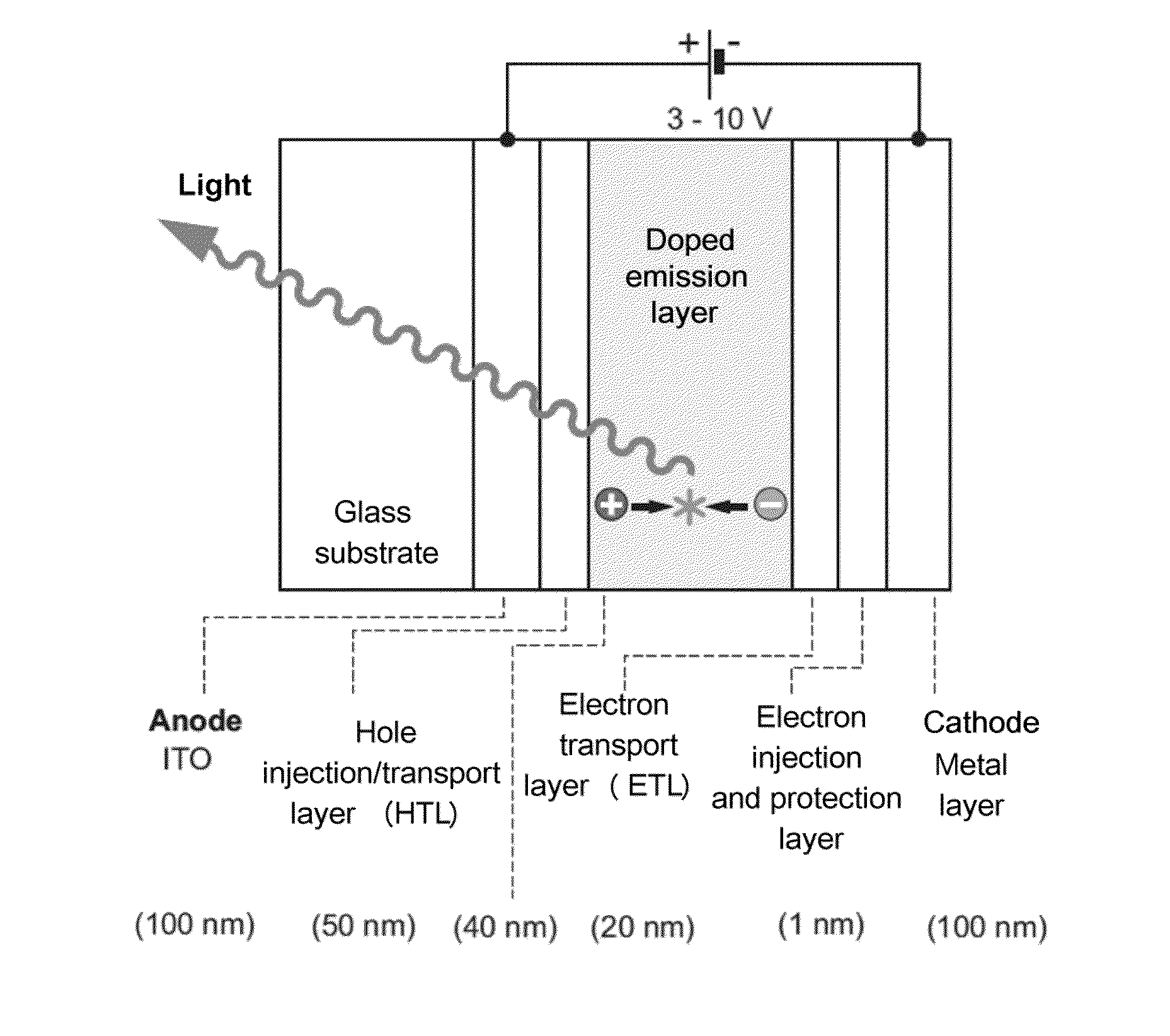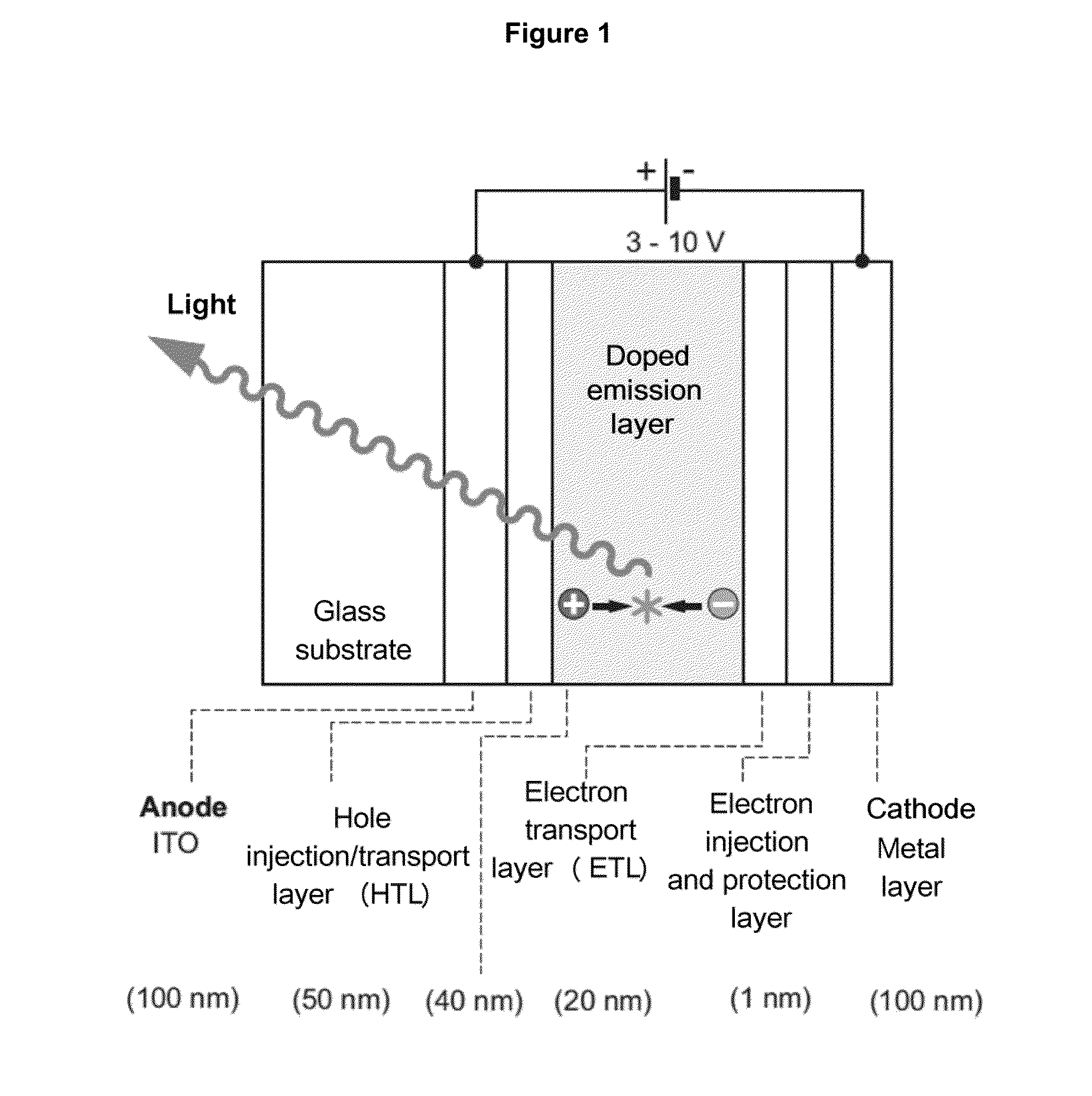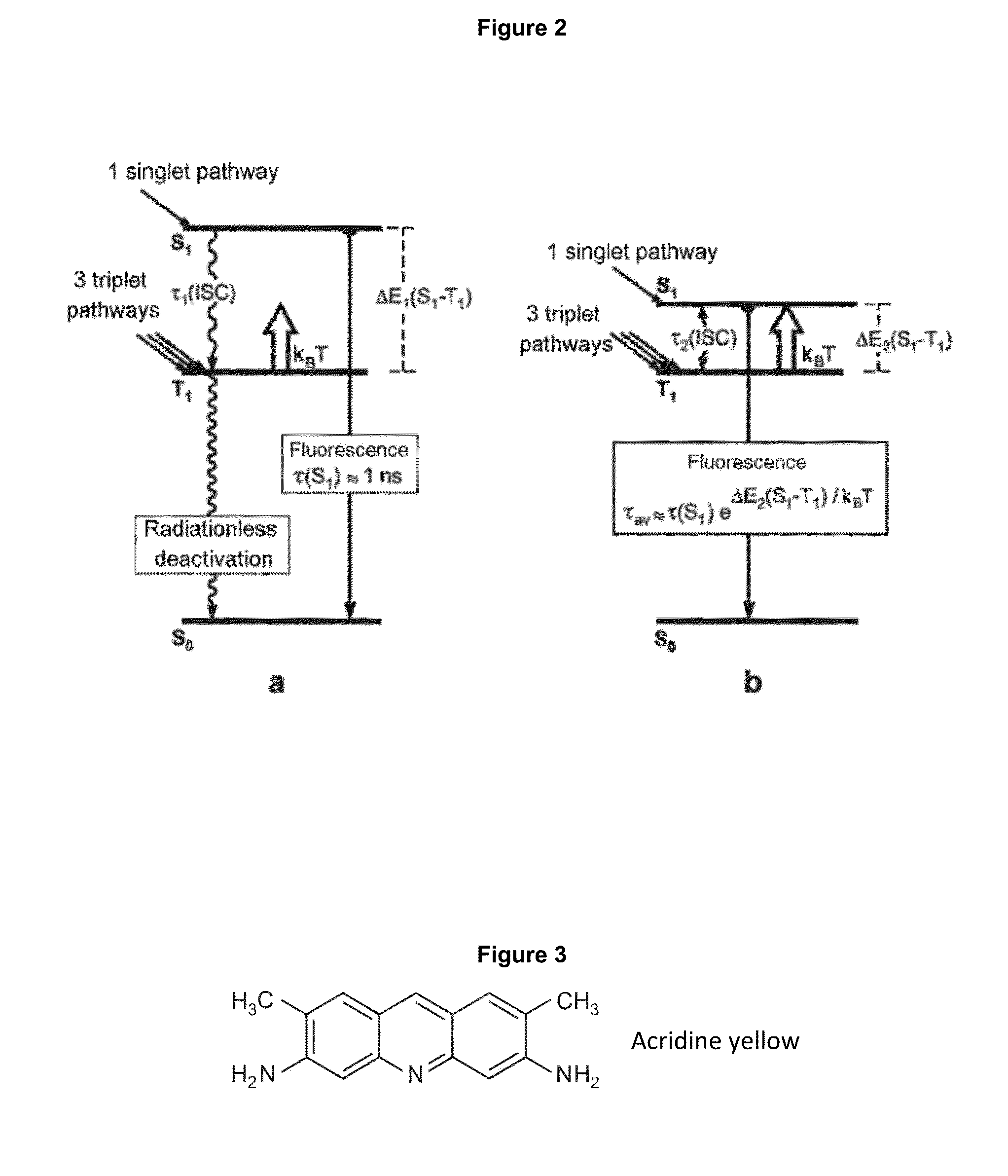Organic molecules for oleds and other optoelectronic devices
a technology of organic molecules and optoelectronic devices, which is applied in the manufacture of non-metal conductors, conductors, and final products. it can solve the problems of complexes that are often more chemically reactive, insufficient long-term stability of these emitter materials, and high price of noble metals
- Summary
- Abstract
- Description
- Claims
- Application Information
AI Technical Summary
Benefits of technology
Problems solved by technology
Method used
Image
Examples
examples
[0080]From the multitude of realizable organic molecules having a small singlet S1-triplet T1 energy difference, using the example of the emitters of formulas I to III, some examples are given, these having the following properties:[0081]The materials are very good emitters.[0082]The absorption and fluorescence transitions between the S0 and S1 states are allowed. Thus, the emission decay times τ(S1) are short.[0083]The examples include molecules having emissions from a broad spectral range.
[0084]An example of an organic molecule is defined by formula IV.
[0085]Herein, R1 to R9 are ═H, Br, I and / or groups, which are summarized in the examples for the donators D and / or acceptors A mentioned above. Adjacent Ri, Rj and Rk from R1 to R9 can be conjugated aromatic or heteroaromatic rings. Preferably Br and / or I also cause an increase of the spin orbit coupling.
[0086]R′ is either not present or H, Alkyl, O, S.
[0087]A further example for an organic molecule according to the invention is def...
PUM
| Property | Measurement | Unit |
|---|---|---|
| intersystem crossing time constant | aaaaa | aaaaa |
| emission decay time | aaaaa | aaaaa |
| intersystem crossing time constant | aaaaa | aaaaa |
Abstract
Description
Claims
Application Information
 Login to View More
Login to View More - R&D
- Intellectual Property
- Life Sciences
- Materials
- Tech Scout
- Unparalleled Data Quality
- Higher Quality Content
- 60% Fewer Hallucinations
Browse by: Latest US Patents, China's latest patents, Technical Efficacy Thesaurus, Application Domain, Technology Topic, Popular Technical Reports.
© 2025 PatSnap. All rights reserved.Legal|Privacy policy|Modern Slavery Act Transparency Statement|Sitemap|About US| Contact US: help@patsnap.com



